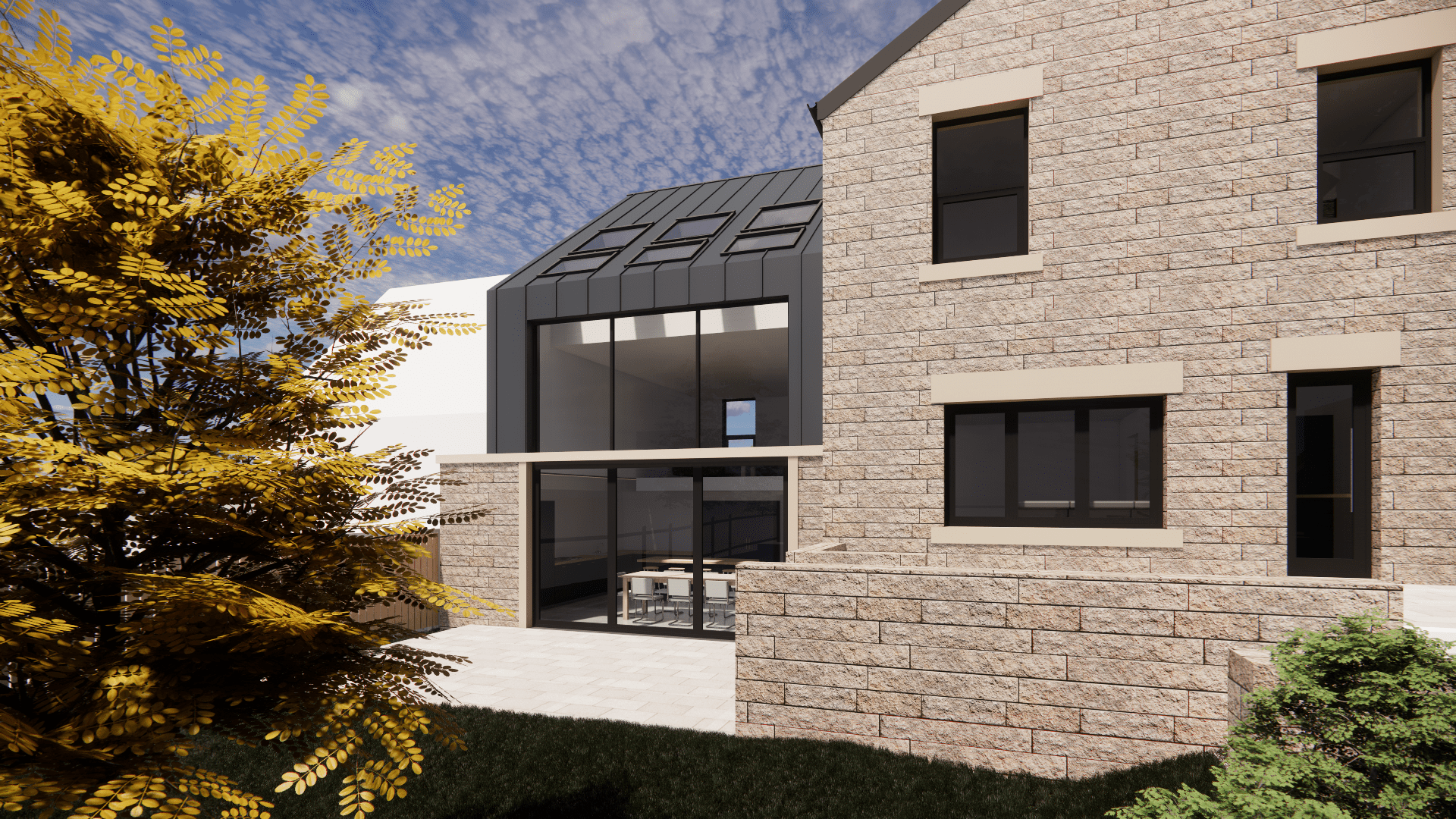
But beautiful as they are, older properties don’t always align with modern life. Spaces can feel closed off, storage limited and layouts unsuited to how we live today.
This is where a well-designed extension comes in. Not to erase the past, but to help your home evolve without losing its soul. At CODA Bespoke, we believe extending a period home is as much about sensitivity as creativity. It’s a balancing act between old and new, where every line, material and design choice matters.
What should you know before extending a character property? Here’s how to approach it, from an architect’s perspective.
Before sketching out ideas or talking square footage, take time to truly understand the roots of the property. Is it a Victorian terrace with soaring ceilings and ornate detailing? A Georgian townhouse with grand symmetry? A Yorkshire farmhouse with thick stone walls and deep-set windows?
Each period speaks its own architectural language. A good extension shouldn’t necessarily mimic it, but respect and respond to it. That might mean echoing proportions or using contrasting materials to create deliberate distinction between building eras.
In our own projects, like the award-winning Corn Yard in Sheffield featured on Grand Designs, we’ve found that the most successful extensions are the ones that feel like a natural continuation of the home’s story, rather than a loud interruption.
How did we transform a 200-year-old corn mill into a pair of stunning, low-maintenance twin homes that honour Sheffield’s industrial past while simultaneously embracing modern living? Thoughtful design choices like the use of utilitarian-inspired materials like black steel cladding, exposed copper piping and polished concrete floors help merge the old and new seamlessly.
While period homes were built for a different era, your extension should be tailored for your lifestyle. There’s no reason why contemporary concepts like open-plan living, extensive glazing, functional home offices and multi-purpose zones that flex with family life can’t be incorporated into period homes.
One of the biggest challenges in older homes is natural light. Small windows, deep footprints and solid internal walls can leave spaces feeling dim and disconnected. An extension offers the chance to change that. Carefully placed rooflights, glazed link corridors and Crittall-style doors can transform how light moves through the home.
One way to invite natural light in? Floor-to-ceiling glass walls, as seen in one of our newest projects in Sheffield, which involves the complete transformation of a Neoclassical home.
Of course, more light doesn’t always mean more glazing. We often work with layered openings (like tall slot windows, internal courtyards or borrowed views) to capture natural light. Orientation, privacy and solar gain are all considered from the outset to ensure your space isn’t just brighter, but more balanced.
There are generally two architectural routes when extending a period property:
Complementary: This involves echoing key features of the original building (e.g. materials, rooflines, fenestration) so the new addition feels visually cohesive. It's subtle, respectful and often suits conservation areas or listed properties.
Contrasting: Here, the extension is intentionally modern. Think sleek lines, bold materials and minimal detailing. When handled well, this creates a beautiful dialogue between old and new. The original home is allowed to shine and the new addition becomes a striking counterpoint. It’s a technique executed beautifully in projects like Tom Lane, which saw a 1970s bungalow updated with a striking new entrance defined by honey-hued larch cladding. Traditional? No. Striking in all the right ways? Yes.
The bottom line is there’s no one right answer. The decision depends on context, planning constraints and your own taste. At CODA Bespoke, we often blend the two, using traditional materials in modern forms, or playing with rhythm and proportion in a way that nods to the past without replicating it.
Original materials carry weight. Not just physically, but emotionally. The texture of handmade brick, the irregularity of lime plaster, the patina on old timber floors… these details matter.
When extending a period home, it’s important to honour those materials without competing. Sometimes that means sourcing reclaimed brick to match an existing elevation. Other times, it means introducing something new (like charred larch or zinc cladding) that sits alongside the original material with quiet confidence.
An insider secret? Pay close attention to the transitions. A well-designed threshold, internal step, or change in ceiling height can mark the shift between old and new without it feeling jarring.
Extensions to period homes often require careful negotiation with local authorities, especially if the building is listed or sits within a conservation area.
A skilled architect will manage this process from day one by:
In projects like 119 Park Road in Timperley, we’ve successfully transformed a non-designated heritage asset into four new-build dwellings that seamlessly balance innovation with integrity. The result? Proof that even bold designs can win approval when they respect their context.
Extending a period home isn’t just about solving today’s problems. It’s about adding to a legacy. That’s why the focus should always be on longevity, sustainability and thoughtful detailing when extending a period home. From high-performance glazing and airtight construction to breathable natural materials and passive design strategies, extensions should be designed to last, and to live beautifully.
When you work with CODA Bespoke, you’re not getting a set of plans. You’re entering a collaborative process, from first sketch to final handover. Our role is to see the big picture while sweating the small stuff, so your period home extension doesn’t just look beautiful, but feels just right.
Our ethos? Period homes deserve care. They’ve stood the test of time, often for over a century. A thoughtful extension should enhance what’s already there, not compete with it. This is why we simply don’t believe in one-size-fits-all solutions. Every home has a story. Our role is to help you write the next chapter. One that celebrates heritage, embraces modern living and leaves room to grow.
Thinking of extending your period home? Let’s start with a conversation.
